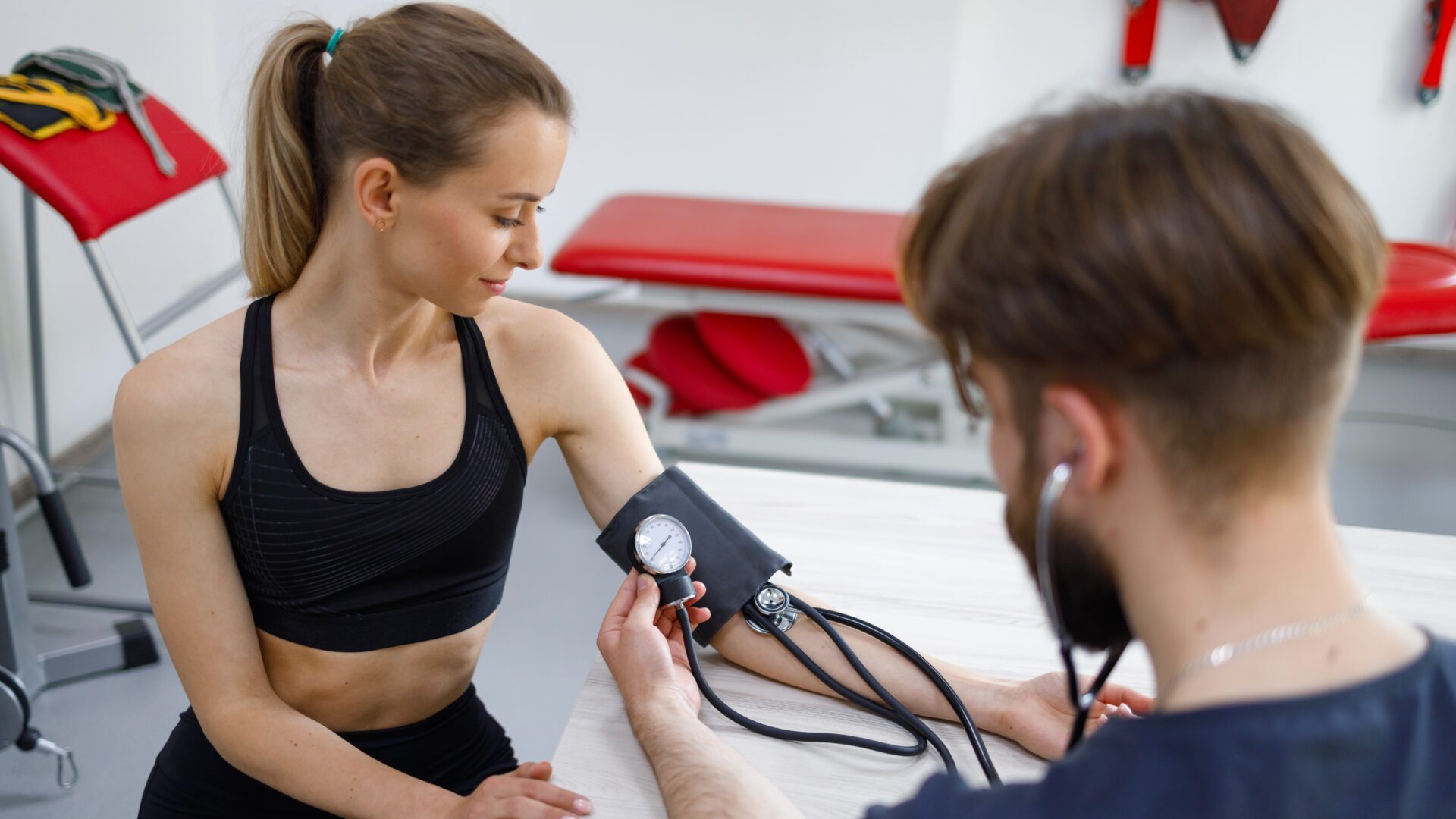Exercise is, of course, good for your health. But how do high blood pressure and sport go together? Pille Bušin, an internal medicine specialist, explains whether it is safe to exercise at all and what to keep in mind when combining hypertension and exercise.
What are the risk factors for hypertension?
Blood pressure is a very important indicator of health, but unfortunately it starts to creep up. This means that your blood pressure may be high, but there’s no sign of how you’re feeling.
All adults are advised to have their blood pressure checked at least once every two years to stay aware of their health.
If there is a family history of hypertension, heart attack or stroke and if blood pressure tends to be borderline, it is recommended that blood pressure is measured at least once a year. You can check your health, for example, with a stress test (you can find a suitable health facility on Stebby HERE).
What is normal blood pressure?
Normal blood pressure is <130/<85 mmHg.
Borderline blood pressure is 130-139/85-89 mmHg.
High blood pressure is >140/>90 mmHg.
Rahvusvahelise definitsiooni kohaselt loetakse normist kõrgemaks rahuoleku vererõhku üle 140/90 mmHg ja selle ravimisega peaks juba tegelema.
Dr Bušin points out that the risk factors for hypertension are, in particular, older age, higher body weight, a sedentary lifestyle, excessive salt and alcohol intake, as well as genetic predisposition. Sometimes, when blood pressure rises, people experience headaches (especially in the neck), drowsiness, a dull chest and shortness of breath. Vomiting and visual disturbances are less frequent.
“Unfortunately, we cannot change age and genetic predisposition,” says the doctor. However, he adds that if you want to bring your blood pressure back to normal by home remedies, you should address the risk factors that are influencing your blood pressure, i.e. keep your weight normal or reduce it if necessary. Avoid excessive intake of salt and alcohol, and make sure you get enough exercise.
Exercise means sport – but is any sport suitable for high blood pressure? And are hypertensives more at risk of sudden death or heart attack than usual in sports?
Exercise prevents and helps
Dr Bušin points out that a healthy lifestyle and adequate exercise can help prevent hypertension, but does not completely protect against it. However, research confirms that people who are physically active have fewer cases of hypertension and better control of high blood pressure. Both aerobic endurance exercise and ‘weight training’ have a blood pressure lowering effect.
“Exercise reduces both systolic and diastolic blood pressure,” says the doctor. However, he points out that high blood pressure causes thickening of the heart muscle and is a risk factor for atherosclerosis of the cardiovascular system. Sudden rises in blood pressure can destabilise atherosclerotic plaques on the inner surface of the walls of the blood vessels, leading to myocardial heart attack or stroke. This means that hypertensives should be more careful when doing, for example, strength training. However, when starting to exercise, they should avoid over-exertion and exercise for very long periods.
Dr Bušin adds that elevated blood pressure is more common in male athletes, and is linearly related to weight, height and training load. Among female athletes, hypertension is more common in those using oral contraceptives.
The response of blood pressure to exercise is also important – if systolic blood pressure rises above 200-220 mmHg during exercise, this may indicate the development of persistent hypertension in the future. It is difficult to measure blood pressure at exercise under home conditions, but it can certainly be assessed during a cardiological exercise test. “Every 20 mmHg rise in blood pressure above 115 mmHg systolic doubles the risk of mortality,” adds Bušin.
He adds that blood pressure rises more with strength sports (such as lifting weights in the gym or elsewhere, wrestling, etc.) and less with endurance sports. The greatest benefit is therefore gained from light to moderate intensity physical activity.
Let’s be sensible!
The World Health Organisation (WHO) recommends at least 150 minutes of moderate or 75 minutes of high-intensity physical activity per week and muscle-strengthening exercises at least two days a week. Physical activity should be at least 30 minutes a day.
Examples of low-intensity physical activity include walking, cycling (less than 10 km/h), stretching, slow dancing, light gardening and housework.
Examples of moderate-intensity physical activity include brisk walking (around 5 km/h), dancing, cycling at around 15 km/h, tennis, water aerobics.
High-intensity physical activity, on the other hand, includes playing basketball, fast cycling or mountain biking, swimming, running.
Asked whether a person with high blood pressure should definitely use a heart rate monitor to keep an eye on his or her health when exercising, Dr Bušin says that, first and foremost, one should use common sense when exercising.
“If you haven’t exercised much before, you should start with a lighter and shorter physical activity. Over time, you can increase the workload,” she advises.
How to keep blood pressure under control?
You can do a lot to bring high blood pressure down to normal by changing your daily diet and exercise habits. Here are some general medical recommendations for keeping blood pressure under control:
- Eat a varied diet. Eat more berries, fruit, vegetables and beans (500g a day), fish and wholegrain products and nuts and seeds. Eat less sweet dairy products, pork and beef, sweet and salty snacks and sugary soft drinks and juices.
- Use less salt. Do not exceed the daily recommended intake of salt (6 g or 1 teaspoon). Use natural herbs instead of salt, avoid adding salt to food when you eat it, and check the salt content of foods when you buy them.
- Move every day. To keep your heart beating, move for at least 150 minutes a week at a pace that allows your heart rate and breathing to speed up, but allows you to talk freely. Do muscle-strengthening exercises at least twice a week.
- Stay away from tobacco. In addition to tobacco, it is also a good idea to avoid alternative tobacco products (including e-cigarettes, nicotine pouches).
- Drink alcohol in moderation. For adult men, the low health risk limit is considered to be an average of 2 units of alcohol (around 0.5 litres of beer or 60 ml of spirits) per day and at least three alcohol-free days per week.
- Prioritise sleep
- Keep your mental well-being in check
Source: Tervisekassa
Find over 8500 ways to keep your health in check HERE!






